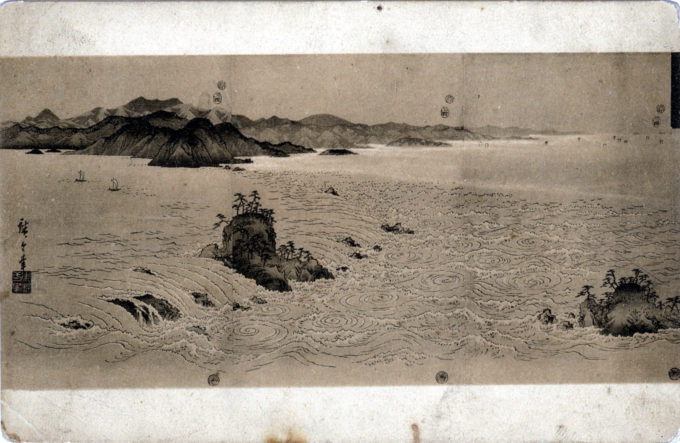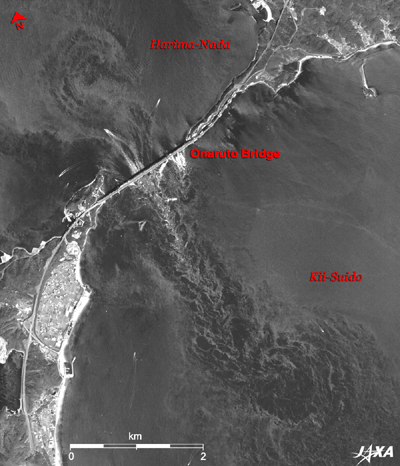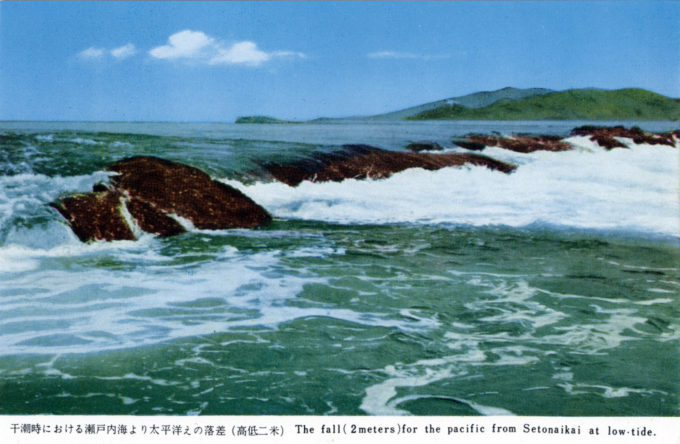“The long expanse of water between Honshu (Mainland), and the islands of Shikoku and Kyushu, called Seto-Naikai (‘Sea within Channels’) by the Japanese and the Inland Sea by foreigners, is really a chain of five seas linked together by channels … At its widest point, from N. to S. it measures 40 mi. and at its narrowest point, 4 mi. By means of the Yura and Naruto Straits it is connected with the Kii Channel which in turn connects with the Pacific Ocean.
Naruto whirlpool, 2006. The animation depicts large Naruto whirlpools as observed by the Panchromatic Remote-sensing Instrument for Stereo Mapping (PRISM) on board the Advanced Land Observing Satellite (ALOS) Daichi in April 2006. [Source: Japan Aerospace Exploration Agency.]
“The Inland Sea is comparatively shallow; the deepest sections are the W. end of the Shimonoseki Straits and the Akashi Channel. In the Hoyo and Shimonoseki Straits there are very strong tidal currents, and in the Naruto Straits, between Awaji and Shikoku Islands, there are whirlpools, formed by opposing currents flowing inward and outward over an uneven bottom.
“Seto-Nakai (Inland Sea) National Park was created in 1936, and its area was expanded in 1960 to 162,857 acres (land area only).
“Naruto Channel, popularly called Awa-no-Naruto (‘Roaring Gateway of Awa’), separates the island of Awaji from Shikoku and thus connects the Inland Sea with the Pacific Ocean. The channel is only 1 mi. wide and the tide rushes in with tremendous force, especially the spring tides, when the velocity of the water reaches 12 or 13 knots. The channel is divided by rocks, which add to the wildness of the water.
“Throughout the year boats are available for the viewing of the whirlpools at a close range.”
– Japan: The Official Guide, Tourist Industry Bureau, Ministry of Transportation, 1961
Naruto whirlpools at Setonaikai, Inland Sea, c. 1910.
1960s • Amusements & Recreations • Outside Tokyo
Tagged with: Naruto whirlpools, Seto Inland Sea, Seto-nakai, Shikoku, Tourism
Please support this site. Consider clicking an ad from time to time. Thank you!




